You can also listen to this article in the voice of own Plastic Artist Rosângela Vig:
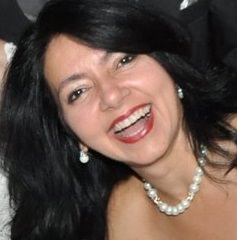
I affirm, then, that this serves as a starting point and a base when I admit that there is a Beauty in and of itself, a Goodness, a Greatness in and of itself, and the same thing happens to everything else. (…) In following this principle, it seems to me that I do not risk diverting myself: How secure I am to answer to the others that things are beautiful because of the Beautiful! Do not you think that too? (PLATO, 1999, p. 168)
Plato's Philosophy has transcended time, it is as current as it is profound. His thought leads us to the Beauty ff the world of ideas, it is what joins to the Good, the Truth and the perfection. In Art, Beauty is the result of colors and forms, in perfect arrangement, so harmoniously combined as the notes of a song. To the eye, the Beauty travels through the field of sensations, is a source of endless delight and leads the heart to ecstasy.
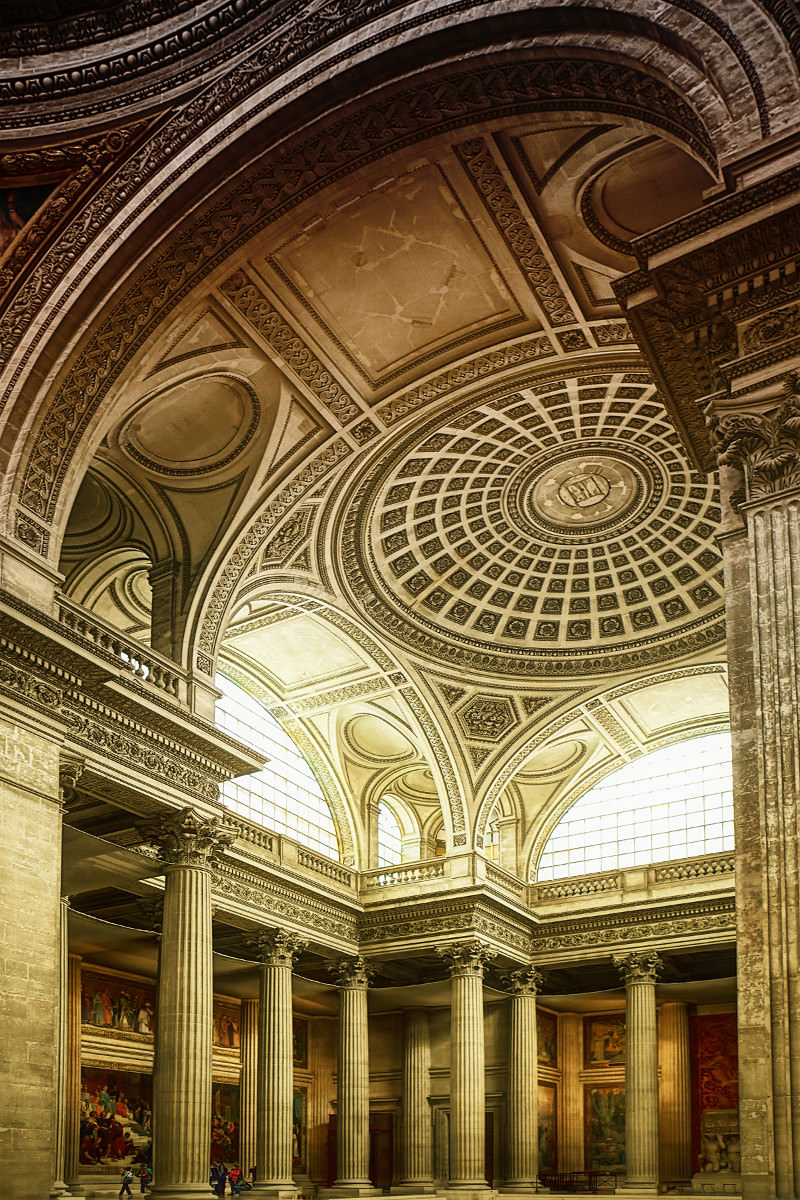
It is still in the classics that restless modernity seeks knowledge and ingredients for the new. It was so with the Art of the Neoclassical. The Classical Antiquity, which served as a model in other times of the art history, was taken up again as a source of inspiration, but this time, treated more seriously, using the precise basis of History, due to the discoveries of Pompeii and Herculaneum. The two Italian cities were buried in 79 A.D., because of the eruption of Vesuvius. The excavations, began in 1738, were found objects, furniture, porcelains and mural paintings. Such artifacts served as models for many artists. Mythology acquired a new approach, which distanced itself from Rococo. The representations of love, the Cupid, the nymphs and the bucolic images gave way to heroic scenes. In shape, were left aside the dramatic and the exaggerations of the Baroque, as well as the superficiality of the Rococo.
The style had its apogee in 1830; and flourished between the Eighteenth and Nineteenth centuries, under strong influence of the Illuminist thought; and of all the philosophical legacy of the Eighteenth century; of the French Revolution; and of the Industrial Revolution. The movement had also a cultural background, as a reflection of the changes of the period, of the rise of the bourgeoisie and of the Enlightenment rationalism.
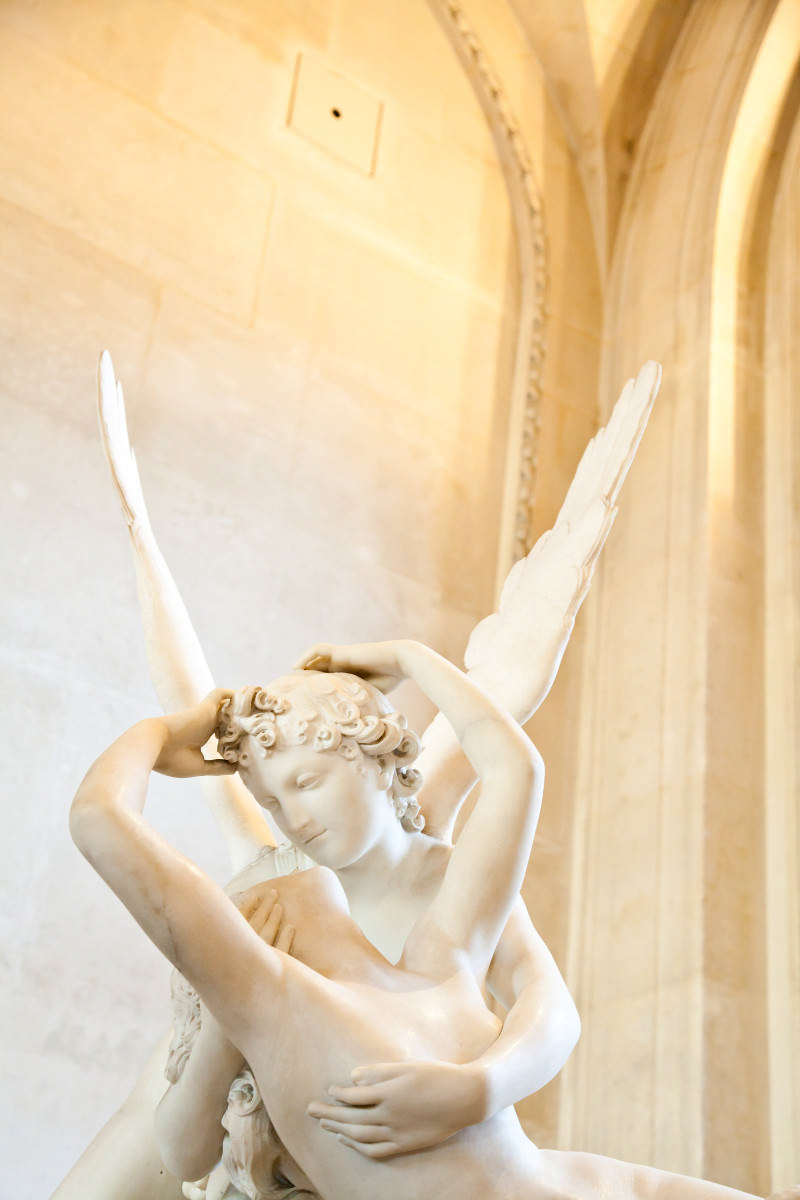
Architecture
Refuge yourself in these quieter, safer, higher things! What sustains the heaviest bodies in the midst of this world, what suspends the lighter ones, carries the fire to the higher regions, indicates to the stars their rotation, and, thus many other phenomena even more marvelous (SENECA, 2006, pp. 80 and 81)
The Neoclassical Architecture, showed an encounter between the precision of Greek and Roman models and Enlightenment rationality. From Classical Architecture, the period inherited the use of noble materials, such as granite, marble, wood, and advanced technology. Grandeur and majesty came from the Romans; Grace and Lightness, of the Greeks. From the Enlightenment, remained for the Neoclassical Architecture, the simplicity and the logic, in the building.
The church of Santa Madeleine, in France, is among the buildings of this style. The site is the current parish of the Archdiocese of Paris and its portico was inspired on one of the most preserved Roman temples, the Maison Carrée. Its 52 columns, with 20 meters of height, along the building resemble a Roman temple. Like a classical antiquity construction, the Pantheon of Paris (Fig. 1), also followed the neoclassical line. Built to be a church, the structure now functions as a mausoleum, where the remains of several personalities in the history of France are stored. The grand building had its portico based on the Roman Pantheon, This can be seen in its 22 columns of Corinthian style. Over them, the triangular pediment completes the main façade. The beauty of the place is completed by the decoration of its interior, which harmonizes the accuracy and lightness of the Classic, with the seriousness and sobriety of the Neoclassical.
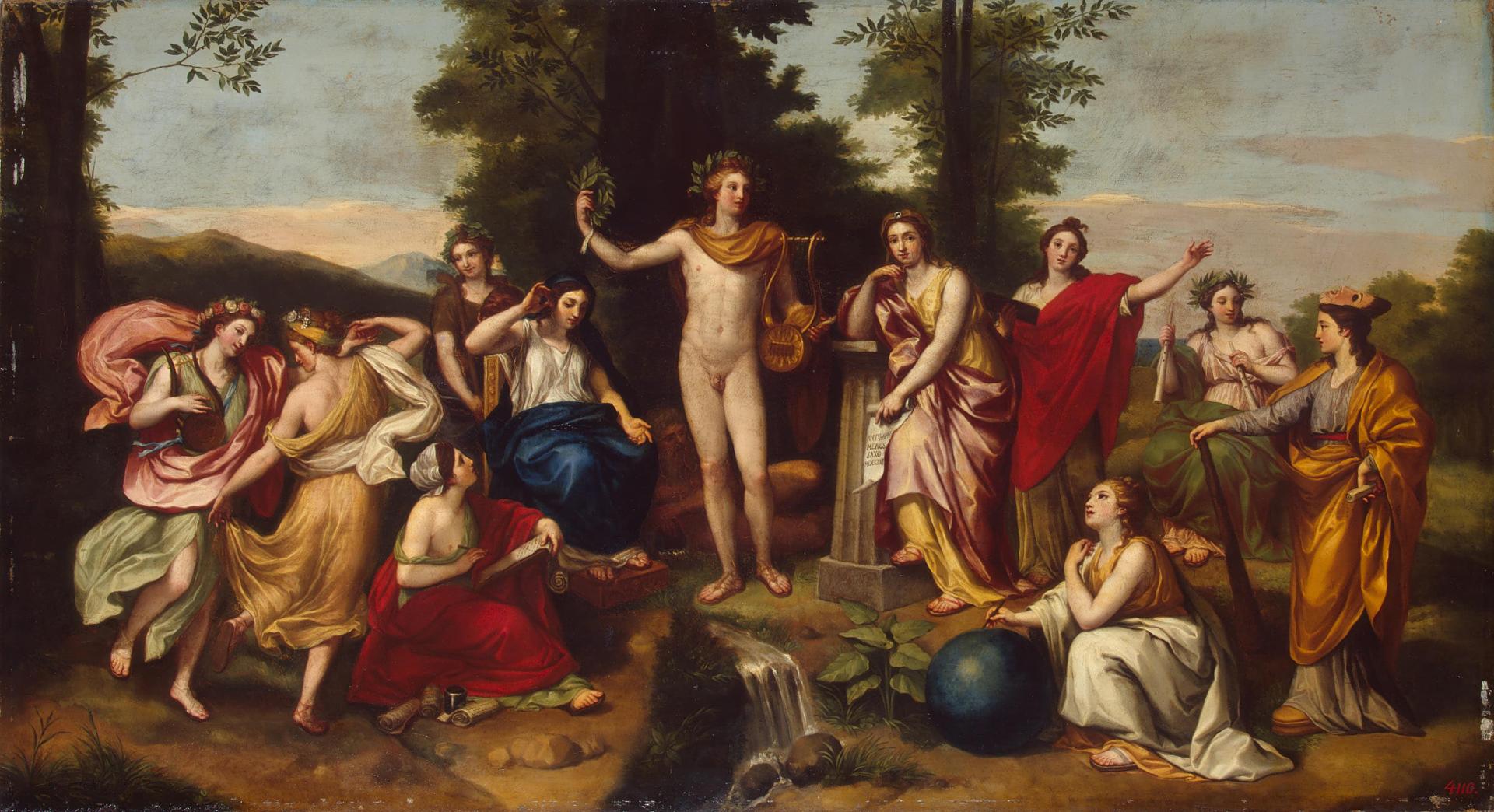
Sculpture
Life is divided into three periods: What was, what is and what will be. What we do is brief, what we will do, dubious, What we did, right. In fact fate has lost control over the past, no one may want to get it back. (SENECA, 2006, pp. 49 and 50)
It can be considered that, in Sculpture , the Neoclassical is considered to have two phases. Initially, the approach to classical culture, It became clear in the references to philosophers and Mythology. With the era of Napoleon, the sculpted images began to exalt the figure of the emperor, who appeared in horses, demonstrating magnificence and power.
The main features of the neoclassical sculpture are clarity and austerity. The material of the statues, without paintings, were revealed. Without exaggeration, the images maintained the expressiveness of the scenes portrayed. The Italian Antonio Canova (1757-1821) was the most prestigious representative of the sculpture of this period. Also a painter, the artist demonstrated his ability with the sculpture since he was 16 years, when he already purchased his paintings. His taste for Classical Antiquity was clear during his extensive production.
The various versions of his work, Eros and Psyche (Fig. 2), made by the artist himself, are exhibited at the Metropolitan, in New York; At the Hermitage, in St. Petersburg, Russia; And at the Louvre, in Paris. Without the excesses of Baroque and the Rococo, the artist elaborated the classical mythological passage, when Cupid reanimates Psyche, with the kiss of love. Representing the sublime love, in the scene, the lovers look, the faces are approaching, but do not touch each other, showing, refined sensuality. Cupid's wings are in motion, as if ready to take flight and take his beloved to him. She, on the other hand, raises her arms, to her beloved, accepting his invitation.
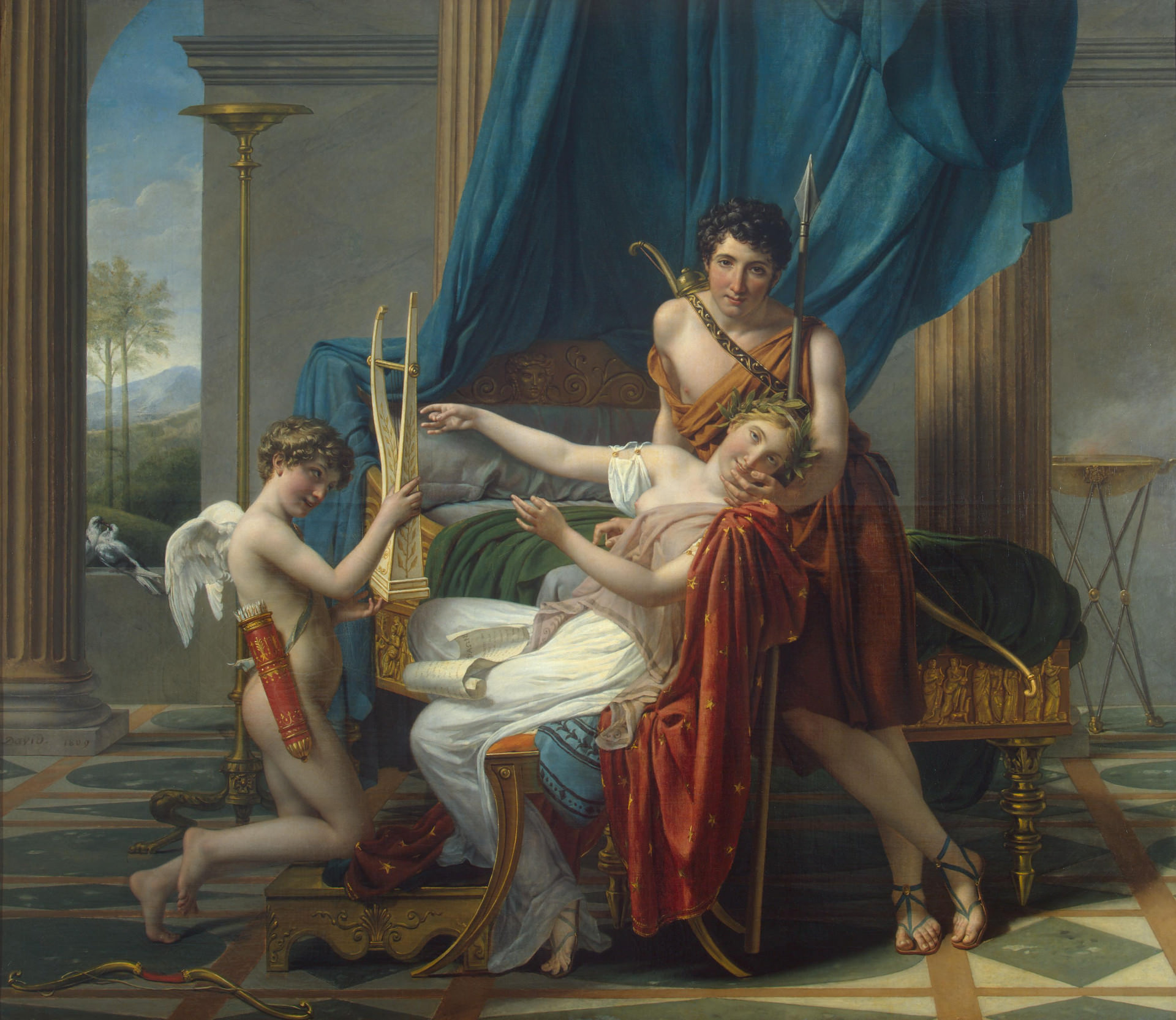
Painting
Genius is the talent that gives rule to Art. Since talent itself as the artist's innate productive faculty belongs to nature, it could be expressed like this. Genius is the innate mood disposition, by which nature gives rule to Art. (KANT, 1998, p. 211)
The genius left its mark on Painting too. Inspiration on the classics has led artists to practice accuracy, symmetry, and proportion. The context of the Nineteenth century and the Enlightenment, intellect and idealism were incorporated to the context. What was already Beautiful, received new features, Art got rid of the looseness of Rococo and dressed herself in rationality and morality. The search for the contrasts between light and dark and the interest in nature are among the attributes of Painting.
And such attributes are present in the work Parnassus (Fig. 3), from 1761, by Anton Raphael Mengs (1728-1779). Much admired by all, the fresco was painted in the central part of the roof of Villa de Albani, a palace built in Rome, for Cardinal Alessandro Albani. In the work, Mengs made clear his resignation to Baroque traditions and showed the scholarship and the return to the mythology, distinct marks of the Neoclassical. At the center of the image, representing the harmony, perfection and poetry, is Apollo, the protagonist, god of youth, of Arts and Music. The muses are around him, each one is symbolizing their most relevant attribute. The work shows resemblances of Raphael, of the Renaissance, a painter admired by Mengs’s father. In virtue of the portraits of travellers who did, Mengs became known in Rome and his work was of great importance to the dissemination of the Neoclassical style.
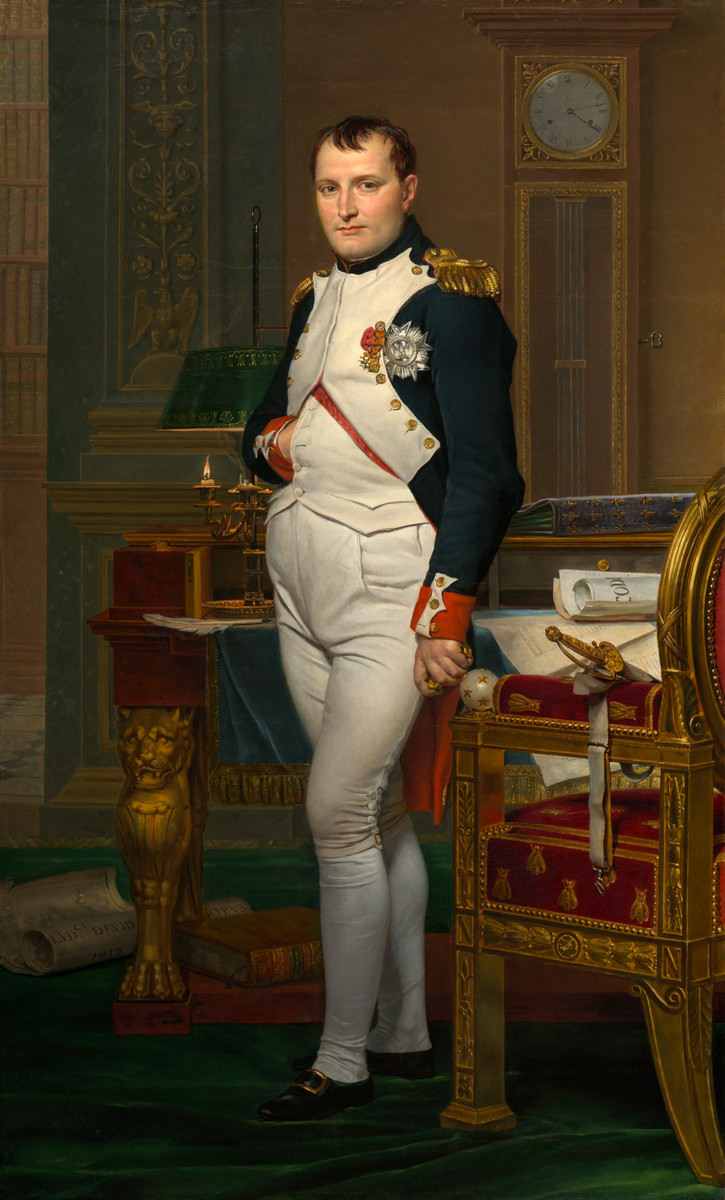
Among the most prestigious painters of the period is Jacques-Louis David (1748-1825). Influenced by Mengs and by the historian Johann Winckelmann (1717-1768), David was a pupil of another great artist of the time, Joseph-Marie Vien (1716-1809); served as official court painter and the French Revolution, movement that he supported; and he came to be arrested. Between the attributes of his work, are the historical themes; the facts related to the life of Napoleon; and the traces left by classical Antiquity, what is clear in the perfection of form, solemn themes and characters. His work, The Oath of the Horatii, from 1784, is the most famous painting of the Neoclassical and it established the name of David as the most important and influential artist of France. Dramatically, the work represents the noble qualities of strength, the patriotism, courage and sacrifice, through an event in of the History of ancient Rome.
Commissioned by the prince and art collector Nikolai Yusupov (1750-1831), the work Sappho and Faon (Fig. 4), of David, alludes to Ancient Greece. In the room, classically decorated are the young poetess Sappho; his beloved, the mythical character, Faon; and Cupid, kneeling. In the scene, one of Sappho's poems is on a paper, unwinding on your leg and she seems to be trying to take your lira, from the hands of Cupid. The simplicity of nature, in the external environment, seems to contrast with the richly decorated interior, with marble floors, pilasters and fabrics in abundance, full of folds and pleats, at the top of the bed. Still make up the lyricism of the scene, two doves kissing at the window; and the voluptuousness of the protagonists. The quality of David's work was clear in this painting, as a portraitist. In the balanced composition, the colors and the shapes adjust harmoniously, what reveals the inspiration in the Renaissance of Rafael Sanzio. The presence of Caravaggio’s Baroque, is in the effects of luminosity, in the work.
Among painters of the period it is also remembering the French, Dominique Ingres (1780-1867) (Fig. 7); Élisabeth Vigée-Lebrun (1755-1842), Anne-Louis Girodet (1867-1824) and Jean-Baptiste Regnault (1754-1829); The Scottish Gavin Hamilton (1723-1798); And the Russian Karl Pawlowitsch Briullov (1799-1852).
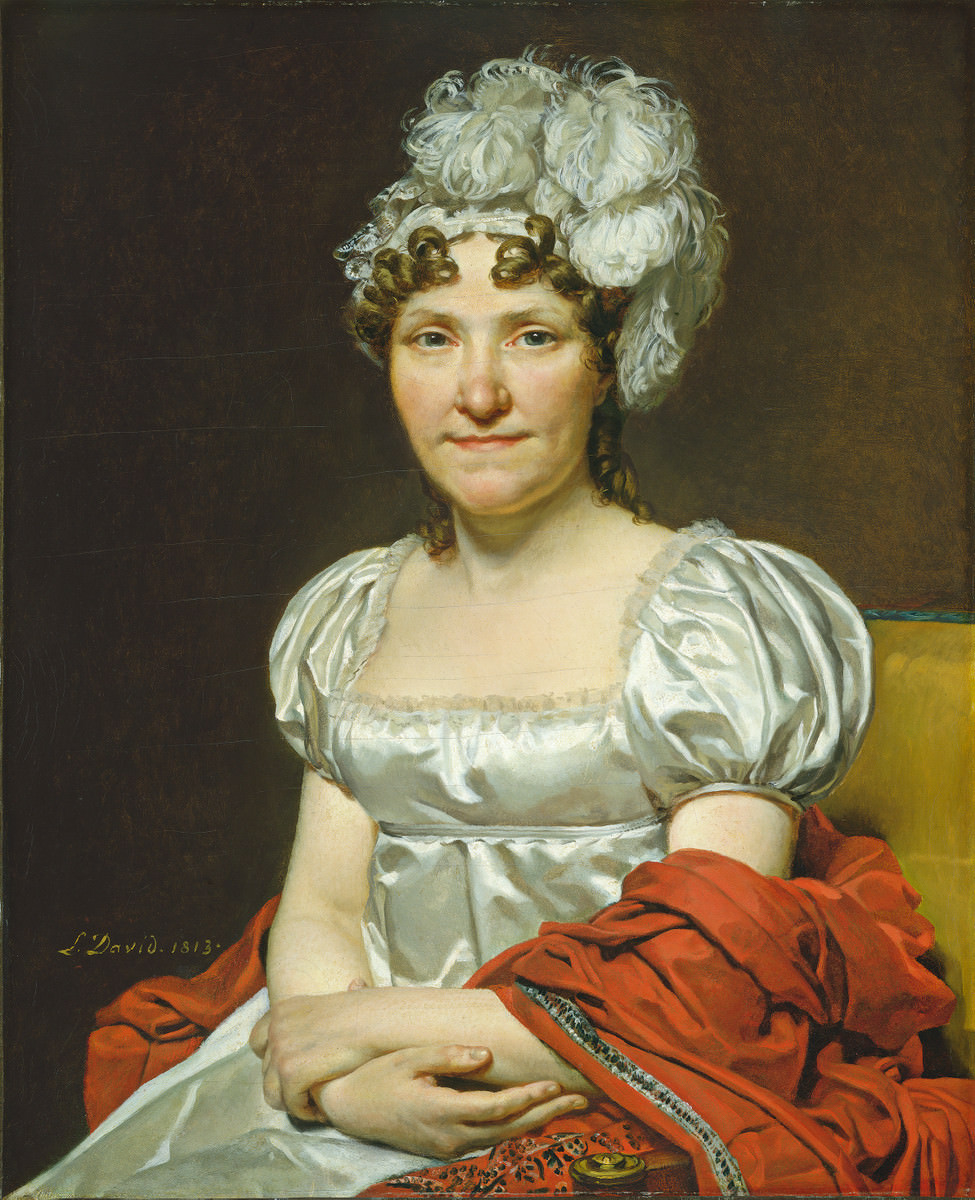
Final Considerations
Learn from the ancients to see nature… they themselves are nature; They must be fed by them. (Ingres in BUGLER, 2014, p. 221)
And while the Art saw the classics reborn, the Enlightenment ideals took place, with Montesquieu (1689-1755) and Voltaire (1694-1778). In Literature, the erotic romances of the Marquis de Sade arose (1740-1814); The Robinson Crusoe by Daniel Defoe (1660-1731); Gulliver's Travels, by Jonathan Swift (1667-1745). In the midst of the effervescences of the period, Art made itself pronounced, demonstrating the insatiable search for the Beauty.
And, once again, The human spirit was seduced again by the classics, truly bewitched by the legacy that antiquity left behind. From its enchantment the Art took on a robust aspect, with new angles, with new appearance, just beautiful, by itself. For Schiller (1759-1805),
In the physical state man only suffers the power of nature; He frees himself from this power in the aesthetic state; and dominates it in the moral state. What is man before beauty elicits him the free pleasure and the serene way to slow him down to the wild? Eternally uniform in his ends, alternating eternally in his judgments, selfish without being himself, released without being free, slave without serving a rule. (SCHILLER, 2002, p. 119)
The philosopher believed in moral development, through artistic manifestations. Through them, the human being is led to the unlimited, he approaches freedom, and softens his wild state. Art speaks, to the spirit and brings the person closer to the ethical state. It is worth to end it with another statement,
Sign up to receive Event News
and the Universe of Arts first!
A man should listen to some music, read some poetry and see a beautiful picture, every day of his life. (Goethe in BUGLER, 2014, p. 221)
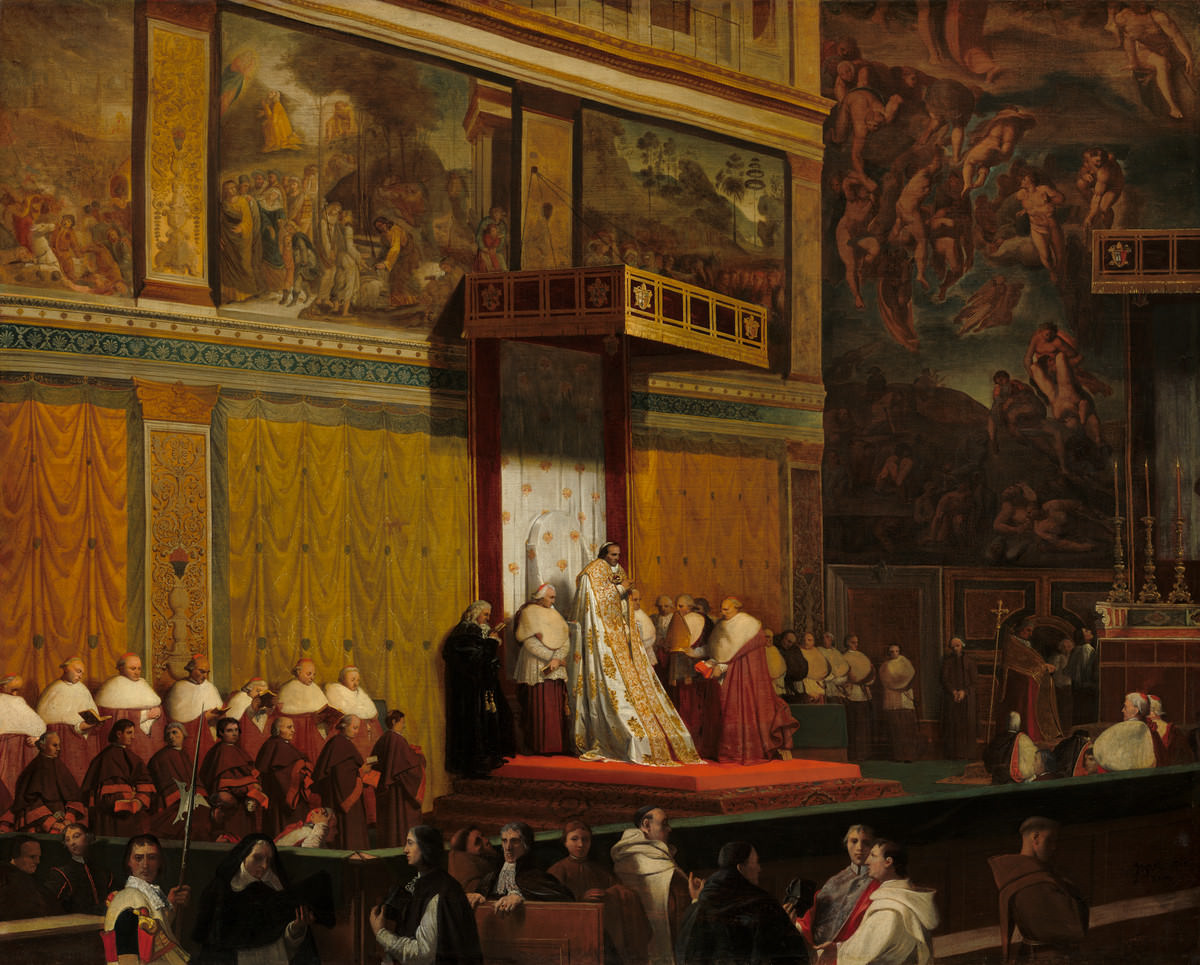
…
Liked? [highlight]Leave a comment[/highlight]!
References:
- BAYER, Raymond. História da Estética. Lisboa: Editorial Estampa, 1993. Tradução de José Saramago.
- CHILVERS, Ian; ZACZEK, Iain; WELTON, Jude; BUGLER, Caroline; MACK, Lorrie. História Ilustrada da Arte. Publifolha, S.Paulo, 2014.
- EAGLETON, Terry. A Idéia de Cultura. São Paulo: Editora UNESP, 2005.
- FARTHING, Stephen. Tudo Sobre a Arte. Rio de Janeiro: Sextante, 2011.
- GOETHE, Johann Wolfgang. The sorrows of Young Werther. Porto Alegre: L&PM Pocket, 2009.
- GOMBRICH, E.H. A História da Arte. Rio de Janeiro: Editora Guanabara, 1988.
- HAUSER, Arnold. História Social da Arte e da Literatura. Martins Fontes, São Paulo, 2003.
- KANT, Immanuel. Crítica da Faculdade do Juízo. Porto, Portugal: Imprensa Nacional, Casa da Moeda, 1998.
- MASSAUD, Moisés. A Literatura Brasileira através dos Textos. São Paulo Ed. Cultrix, 2000.
- PLATO. Os Pensadores. São Paulo: Editora Nova cultural, 1999.
- POE, Edgar Allan. A Filosofia da Composição. Rio de Janeiro: 7 Letters, 2008. Tradução: Léa Viveiros de Castro.
- SCHILLER, Friedrich Von. Fragments of Lectures on Aesthetics. Belo Horizonte: Ed. UFMG – Departamento de Filosofia, 2004.
- SCHILLER, Friedrich Von. A Educação Estética do Homem. São Paulo: Ed. Iluminuras, 2002.
- SENECA, Lúcio Anneo. Sobre a Brevidade da Vida. Porto Alegre: L & PM Editores, 2006.
- VIG, Rosângela Araújo Pires. DA ARTE COMO COMUNICAÇÃO À COMUNICAÇÃO COMO ARTE. Comunicação, Cultura e Mídia, Uniso, Sorocaba: 2010. Available in:
comunicacaoecultura.uniso.br/prod_discente/2010/pdf/Rosangela_Vig.pdf
The figures:
Fig. 1 – Pantheon in Paris. Photo of WDG Photo.
Fig. 2 – Eros and Psyche, Antônio Canova (1757-1821), at the Metropolitan in New York. Photo from perseomedusa.
Fig. 3 – Mengs, Anton Raphael. Parnassus. Germany. 1761. Oil on canvas 55 x 101 cm. Inv. no. GE-1327. Credit: The State Hermitage Museum, St. Petersburg.
Fig. 4 – David, Jacques-Louis. Sappho and Phaon. France 1809. Oil on canvas 225.3 x 262 cm. Inv. no. GE-5668. Credit: The State Hermitage Museum, St. Petersburg.
Fig. 5 – The Emperor Napoleon in his study at the Tuileries, Jacques-Louis David, 1812. National Gallery of Art, Washington. Credit: Samuel H. Kress Collection.
Fig. 6 – Madame David, Jacques-Louis David, 1813. National Gallery of Art, Washington. Credit: Samuel H. Kress Collection.
Fig. 7 – Pope Pius VII in the Sistine Chapel, Jean-Auguste-Dominique Ingres, 1814. National Gallery of Art, Washington. Credit: Samuel H. Kress Collection.
You might also like:
- First Traces of Modern Art – Abstract Expressionism in Brazil by Rosângela Vig
- First Traces of Modern Art – Expressionism in Brazil by Rosângela Vig
- Modern Art – Abstract Expressionism by Rosângela Vig
- First Traces of Modern Art – Impressionism in Brazil by Rosângela Vig
- Modern Art – Surrealism by Rosângela Vig
- Modern Art – Abstractionism by Rosângela Vig
- Modern Art – Cubism by Rosângela Vig
- Modern Art – Expressionism by Rosângela Vig
- First Traces of Modern Art – Symbolism by Rosângela Vig
- First Traces of Modern Art – Post-Impressionism by Rosângela Vig
- First Traces of Modern Art – Impressionism by Rosângela Vig
- Romanticism in Brazil by Rosângela Vig
- Romanticism by Rosângela Vig
- The Neoclassical Art in Brazil by Rosângela Vig
- The Rococo in Brazil by Rosângela Vig
- Rococo by Rosângela Vig
- How appears the Surreal Work by Rosângela Vig
- The Baroque in Brazil by Rosângela Vig
- Baroque by Rosângela Vig
- Mannerism by Rosângela Vig
- Flemish Art – Renaissance in Northern Europe by Rosângela Vig
- Renaissance by Rosângela Vig
- The Contemporary, A little about the Urban Art by Rosângela Vig
- The Naive Art – Ingénue Art by Rosângela Vig
- Middle Ages, Byzantine Art by Rosângela Vig
- Middle Ages, Romanesque Art and Gothic Art by Rosângela Vig
- The Roman Art by Rosângela Vig
- Greek Art, Art History in Ancient Greece by Rosângela Vig
- The Egyptian Art by Rosângela Vig
- The Prehistoric Art by Rosângela Vig
- The beauty Art and the sublime Art by Rosângela Vig
- The Game of Art by Rosângela Vig
- The Misunderstood Art by Rosângela Vig
ROSÂNGELA VIG
Sorocaba – São Paulo
Facebook Profile | Facebook Fan Page | Website
Columnist at Website Obras de Arte
E-mail: rosangelavig@hotmail.com

I am interested in very ancient times and their stories, Thank you for the great article.
Thank you Martina, keep an eye, coming soon more!!!